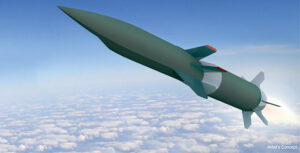
The Defense Advanced Research Projects Agency (DARPA) and the U.S. Air Force have completed the fourth and final flight test for the Hypersonic Airbreathing Weapon Concept (HAWC) program. The flight test of the Aerojet Rocketdyne [AJRD] scramjet engine-equipped Lockheed Martin [LMT] missile, launched from a B-52, "capped a program that accomplished all of its initial objectives," DARPA said on Jan. 30. John Clark, vice president and general manager of Lockheed Martin Skunk Works in Palmdale, Calif., said in a statement…














